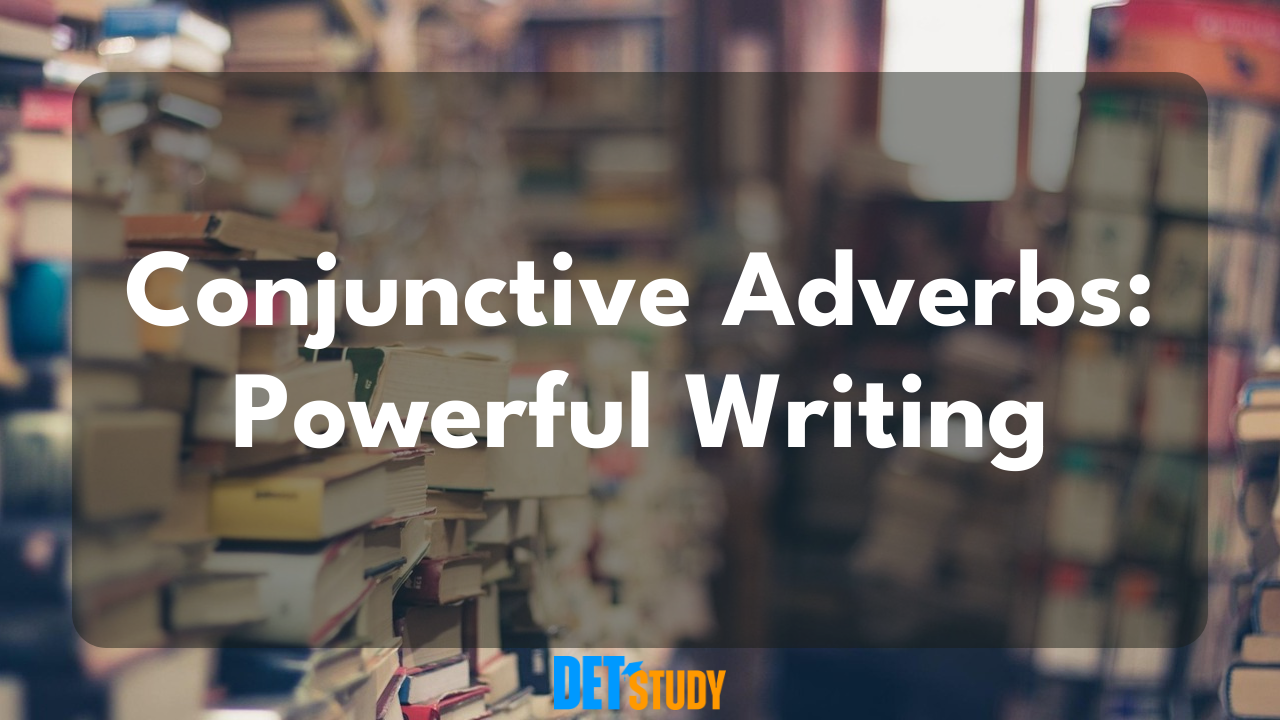Conjunctive Adverbs in Action: Sentences Using Conjunctive Adverbs at the Beginning for Powerful Writing

Introduction to Conjunctive Adverbs
Conjunctive adverbs are an essential tool in English writing and speaking, used to connect two independent clauses or sentences. They help in showing the relationship between ideas, such as contrast, cause and effect, or sequence. Understanding and using conjunctive adverbs effectively can greatly enhance your communication skills.
Conjunctive adverbs can emphasize different relationships, such as:
1. Adding Information:
- Examples: moreover, furthermore, additionally
- Sentence: The class was informative; moreover, the instructor provided helpful resources.
2. Showing Contrast:
- Examples: however, nevertheless, on the other hand
- Sentence: She was tired after the journey; nevertheless, she decided to join us for dinner.
3. Indicating Cause and Effect:
- Examples: therefore, consequently, thus
- Sentence: The company reported record profits; therefore, bonuses were distributed among the employees.
4. Showing Time or Sequence:
- Examples: then, subsequently, meanwhile
- Sentence: The team completed the first phase of the project; subsequently, they began the next stage.
5. Clarifying:
- Examples: namely, in other words, that is
- Sentence: Three countries participated in the summit; namely, Canada, Mexico, and the United States.
Conjunctive adverbs are usually followed by a comma and preceded by a semicolon when joining two independent clauses. However, they can also be placed at the beginning or end of a sentence for emphasis. For instance:
- Beginning: Consequently, the event was postponed due to bad weather.
- End: The weather was unpredictable; they canceled the outing, therefore.
More Examples:
- The proposal was well-received; however, it needs further refinement.
- He forgot his umbrella. Meanwhile, the rain poured heavily.
- The workbook is comprehensive; furthermore, it includes interactive exercises.
Using conjunctive adverbs correctly can make your writing more cohesive and engaging, helping readers understand the precise relationship between your ideas. As with any language feature, practice incorporating these into your writing to improve fluency and clarity.
How to Boost Your Duolingo English Test Score by 10 PointsCommon Conjunctive Adverbs
Conjunctive adverbs play a vital role in connecting ideas within sentences, linking clauses cohesively, and clarifying relationships between thoughts. Here are some common categories and examples to help understand and apply them effectively:
Addition
Conjunctive adverbs in this category are used to add information:
- Moreover: I love Italian cuisine; moreover, I enjoy cooking it myself.
- Furthermore: She is a talented musician; furthermore, she is an excellent painter.
- Additionally: The report highlighted several issues; additionally, it offered solutions.
Contrast
These adverbs highlight differences or exceptions:
- However: The movie was critically acclaimed; however, I didn't enjoy it.
- Nevertheless: The weather was cold; nevertheless, we decided to go hiking.
- On the other hand: The design is modern; on the other hand, it might not appeal to everyone.
Cause and Effect
Used to demonstrate the consequence of an action:
- Therefore: The roads were blocked; therefore, we took a detour.
- Consequently: She forgot to set her alarm; consequently, she was late for work.
- Thus: The evidence was overwhelming; thus, the jury reached a quick verdict.
Sequence or Time
These adverbs show the order of events:
- Then: We finished our dinner; then, we watched a movie.
- Subsequently: The team trained hard; subsequently, they won the championship.
- Meanwhile: The guests were enjoying the party; meanwhile, the host prepared more snacks.
Comparison
These adverbs make comparisons between clauses:
- Similarly: The smartphone is user-friendly; similarly, the tablet is easy to operate.
- Likewise: He enjoyed the play; likewise, his friends found it entertaining.
Clarification
Used to explain or simplify:
- Namely: Three tasks remain; namely, cleaning, organizing, and inventory.
- In other words: She passed the exam with flying colors; in other words, she scored very high marks.
Emphasis
To stress a particular point:
- Indeed: It was a challenging puzzle; indeed, it took us hours to solve.
- Certainly: He improved his skills; certainly, his work quality shows it.
When using conjunctive adverbs, remember to place a semicolon before them and a comma after when connecting two independent clauses. Practice incorporating these into your writing to enhance clarity and cohesion.
Check Your English LevelUsing Conjunctive Adverbs in Sentences
Conjunctive adverbs are versatile tools that connect ideas, add emphasis, contrast, clarify, or show relationships between thoughts in writing. Below, you'll find examples of how to use them effectively in sentences.
Addition
Adding information or ideas:
- Besides: She is an expert in linguistics; besides, she has experience in teaching.
- In addition: He offered to host the event; in addition, he volunteered to handle the logistics as well.
- Moreover: I completed the project on time; moreover, it surpassed all expectations.
- Also: The new policy applies to all employees; also, it includes subcontractors.
Contrast
Showing opposition or exceptions:
- Conversely: He prefers working in the morning; conversely, I find evenings more productive.
- Instead: We could go to the beach; instead, let's visit the museum.
- Nonetheless: The proposal is risky; nonetheless, it could revolutionize the industry.
- Yet: The forecast was for sun; yet, it rained all day.
Cause and Effect
Linking reasons and results:
- As a result: The company expanded rapidly; as a result, profits soared.
- Thus: He trained extensively; thus, he was fully prepared for the match.
- Consequently: A breakdown occurred; consequently, production was halted.
- Therefore: She saved diligently; therefore, she could afford a trip abroad.

Sequence or Time
Indicating the order of events:
- Afterward: We attended the seminar; afterward, we discussed the topics over coffee.
- Earlier: She called to confirm the meeting; earlier, she had sent an email.
- Meanwhile: The chef prepared the main course; meanwhile, the sous chef arranged the dessert.
- Ultimately: We explored several options; ultimately, we decided to invest in the start-up.
Comparison
Drawing parallels between ideas:
- Likewise: Her dedication is admirable; likewise, her attention to detail is commendable.
- Similarly: The film was a success; similarly, the book received critical acclaim.
Clarification
Explaining or simplifying:
- That is: Some of the tasks are simple; that is, they require minimal effort to complete.
- In fact: The course was challenging; in fact, it was one of the most difficult he had taken.
Emphasis
Highlighting an important point:
- Indeed: The discovery was groundbreaking; indeed, it changed the course of research.
- Of course: The conditions were harsh; of course, this made the victory even more impressive.
Conjunctive adverbs can make your writing more cohesive and nuanced. It's important to punctuate them correctly, usually with a semicolon before and a comma after when joining two independent clauses, to ensure clarity and smooth transitions. Practice using these adverbs to connect ideas logically and effectively enhance your writing skills.
Save Money on Your Duolingo English Test with Official Coupon CodeExamples of Sentences with Conjunctive Adverbs
Conjunctive adverbs play a crucial role in connecting independent clauses and improving the flow of writing. They also show relationships between ideas. Here are some examples that illustrate how these adverbs can be used effectively:
- Furthermore: The new policy aims to reduce costs; furthermore, it seeks to improve employee satisfaction.
- Moreover: The research is thorough; moreover, it provides new insights into the field.
- However: The weather was perfect for the picnic; however, we decided to cancel it due to unforeseen circumstances.
- Nevertheless: He was not feeling well; nevertheless, he attended the meeting.
- Otherwise: You must submit the assignment by Friday; otherwise, you will not receive credit for this project.
- Therefore: She has consistently met her sales targets; therefore, she was promoted to senior sales manager.
- Meanwhile: The children played outside; meanwhile, the adults prepared lunch inside.
In these sentences, conjunctive adverbs help to:
-
Add Information:
- "She enjoyed the play; moreover, she plans to attend more performances."
-
Contrast Ideas:
- "He wanted to stay up late; however, he had to wake up early for work."
-
Show Cause and Effect:
- "The team worked past midnight; consequently, they finished the project on time."
-
Sequence Events:
- "We went shopping in the morning; subsequently, we attended a cooking class."
-
Emphasize:
- "He has worked at the company for decades; indeed, he is their eldest employee."
When using conjunctive adverbs, proper punctuation is key. A semicolon typically precedes the conjunctive adverb when linking two independent clauses, and a comma follows it. Keeping this structure in mind will ensure clarity and cohesion in your writing, making your ideas easier to follow and more compelling to your readers.
Tips for Mastery and Practice
Mastering the use of conjunctive adverbs can significantly enhance the clarity and sophistication of your writing. Here are some tips and practice examples to help you get the hang of it:
Understand Their Purpose
Conjunctive adverbs serve to link ideas within your writing by showing relationships like addition, contrast, cause and effect, sequence, and emphasis between clauses. Familiarizing yourself with these relationships will guide you in choosing the suitable conjunctive adverb.
Recognize Common Conjunctive Adverbs
Conjunctive adverbs are versatile, and recognizing them is the first step to using them effectively. Here are a few more examples:
- Therefore: He forgot to set his alarm; therefore, he was late for the meeting.
- Moreover: The seminar was informative; moreover, it was quite engaging for the participants.
- Nevertheless: The hike was challenging; nevertheless, everyone completed it successfully.
- Otherwise: We must finish the work today; otherwise, the deadline will be missed.
- Conversely: She loves summer; conversely, he prefers the winter.
- Thus: The ingredients were fresh and high-quality; thus, the meal tasted exceptional.
Practice Crafting Sentences
Begin practicing by writing sentences using different conjunctive adverbs. Create your constructions by joining two related but independent clauses. Here are example exercises you can tackle:
- Write two sentences about a personal experience. Then combine them using however, in contrast, or nevertheless.
- Think of a sequence of events and outline it using then, next, or subsequently.
- Describe a cause and effect relationship using thus, hence, or therefore.
Punctuate Correctly
Remember the rule: when a conjunctive adverb connects two independent clauses, it usually follows a semicolon and precedes a comma. For example:
- Correct: "The proposal was rejected; therefore, we need to revise our strategy."
- Incorrect: "The proposal was rejected, therefore we need to revise our strategy."
Practicing punctuation alongside sentence structure will solidify your grasp of correct usage.
Revisit and Revise
Review your writing to find opportunities to incorporate conjunctive adverbs for clearer connections between ideas. Revising your essays, reports, or creative writing pieces with this goal in mind can refine your skills over time.
By practicing these strategies regularly, you'll soon find that using conjunctive adverbs becomes an intuitive part of your writing process, helping you craft more connected and engaging narratives.
DET Study provides an extensive suite of over 15,000 practice questions, focusing on leveraging adjectives and adverbs to fortify your grammatical skills. Regular practice with these targeted materials ensures that you approach the Duolingo English Test with enhanced confidence and precision, ready to achieve your desired scores.
🎯 Need more practice? Check out DETStudy.com for expert resources, 15,000+ practice questions, and AI-powered writing and speaking feedback.
Frequently Asked Questions (FAQ)
What is a conjunctive adverb?
How do you use a conjunctive adverb in a sentence?
Can conjunctive adverbs be used at the beginning of a sentence?

